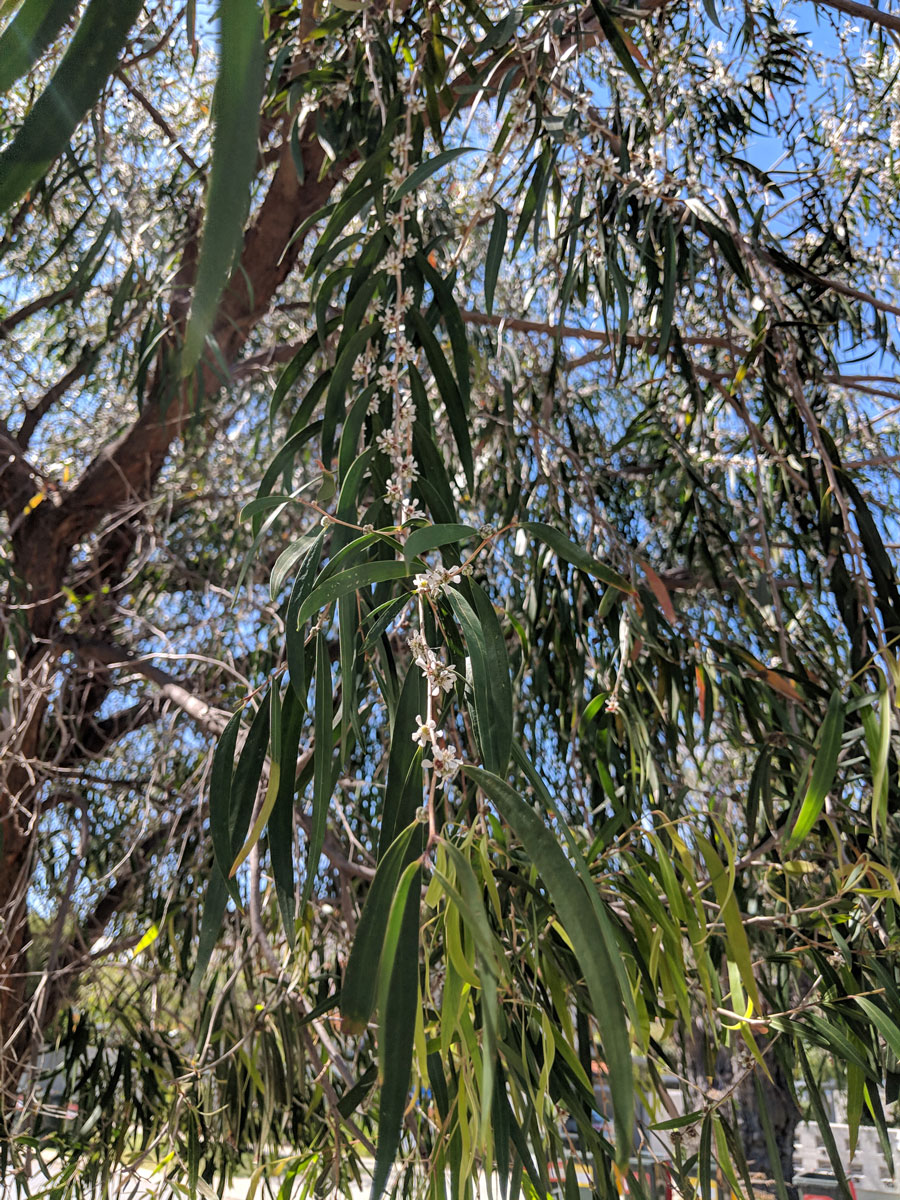Peppermint Tree

Origin: South-Western Australia
Family: Myrtaceae
Scientific Name: Agonis flexuosa
Indigenous (Noongar) Names: Wonnil
Folk Names: Willow myrtle, Swan River peppermint, sweet peppermint
Magical
Element: Water
Day: Monday
Planet: Neptune
Zodiac: Pisces
Associated Celebrations: VernEx
Parts Used: The leaves, twigs, and gum
Magical Properties: Healing, cleansing, protection, harmony, consecration, balance
Substitutions: Niaouli, tea tree, eucalyptus
Lore
Peppermint leaves and gum were used ceremonially by the Noongar people, ans the twigs and leaves were used in smoking ceremonies.
Magical Uses
- Add to healing incenses and charms.
- Use the leaves for recaning or in smoke cleansing bundles or incenses.
Medicinal
Active Constituents: Myrcene, a-thujene, and limonene
Indigenous Medicinal Uses:
- Mothers crushed leaves between their hands and placed their warm/peppermint-y hands on their babies' chests to help eace congestion.
- Decoctions of the leaves were used as mouthwashes and antiseptic washes on minor wounds.
- Smoke from leaves and twigs was used to assist with respiratory problems.
- Ash from burnt twigs and leaves was mixed with fat to create s salve or poultice for the treatment of wounds and sores.
Practical
Peppermint trees are in incredibly popular street tree, both in Perth and around Australia, due to their attractive appearance and ability to grow well in a range of conditions with minimal maintenance.
Indigenous Uses:
- Young plants were used to make spear shafts and digging sticks (wanna)
Botanical
Native to the Perth area, Perth suburb Peppermint Grove is named for the peppermint trees that grew abundantly there (along the Swan River).
Type: Tree
Plant size: up to 10-15m
Bark: Fibrous brown bark
Leaves: Narrow leaves up to 15cm long, growing on thin, weeping branches
Flowers: Small, white flowers, tightly clustered along the stems
Fruit: 3-4mm woody capsules containing many small seeds
Etymology: Agonis is from the Greek agon (“a cluster”), in reference to the arrangement of fruits. Flexuosa is Latin for “full of bends”, referring to the zig-zagging stems which change direction at each leaf node.
The “peppermint” refers to the strong peppermint smell of the leaves (particularly when crushed), and it is also known as “weeping myrtle” in reference to its weeping growth, which looks like a weeping willow from a distance.
In the Garden
Type: Evergreen tree
Light: Full sun
Water: Requires some water while becoming established
Soil: Well-drained
Tips:
- Give one light feed in early spring with a phosphorous tree fertiliser or blood and bone.
